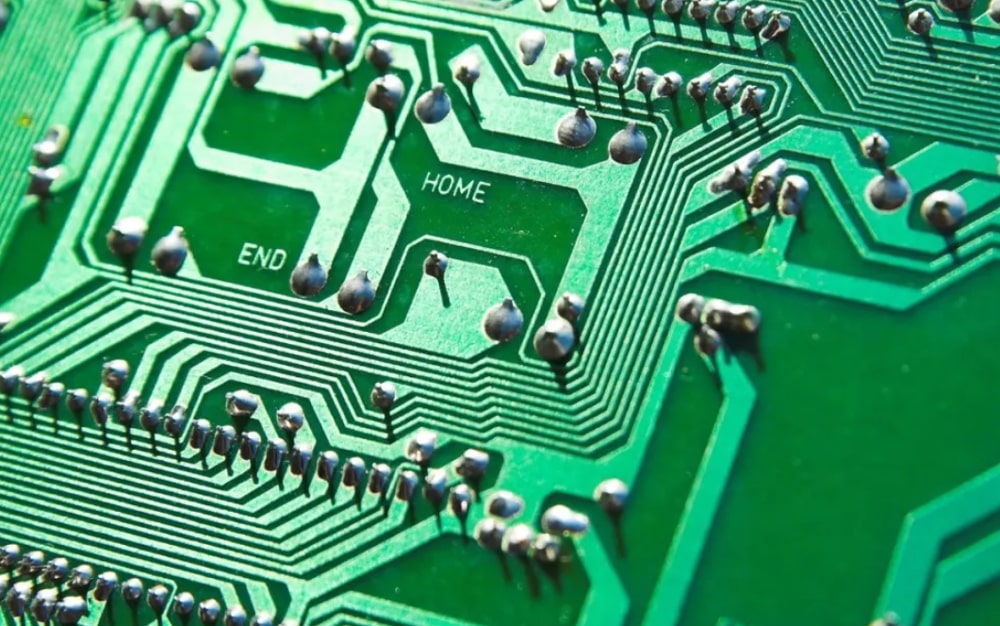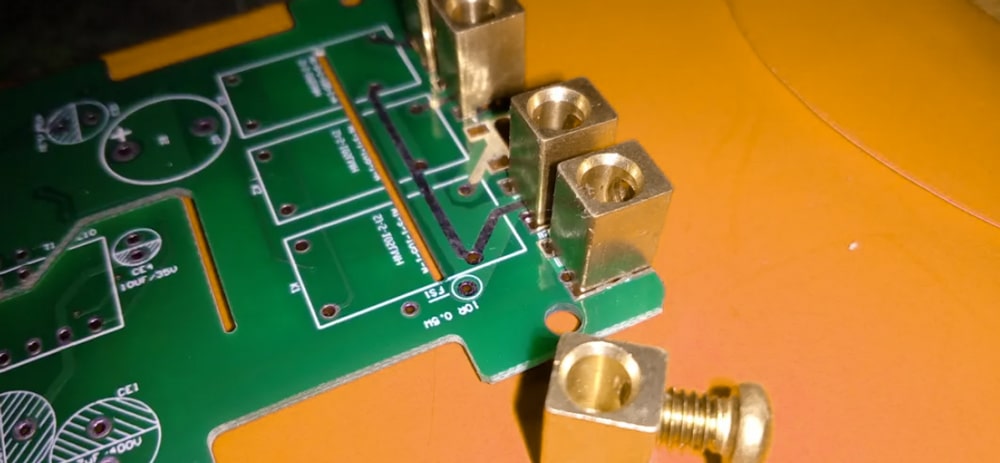How to make PCB withstand 100A current?
21 January 2025
Views: 2011
The usual PCB design current will not exceed 10A, or even 5A. Especially in consumer electronics, the continuous operating current on the PCB usually does not exceed 2A. But if you want to design power wiring for a product, the continuous current can reach about 80A. Considering the instantaneous current and leaving a margin for the entire system, the continuous current of the power wiring should be able to withstand more than 100A. How can this be achieved?
1.Routing on PCB
To figure out the overcurrent capability of PCB, we first start with the PCB structure. Take double-layer PCB as an example. This kind of circuit board usually has a three-layer structure: copper, plate, and copper. Copper is the path through which current and signals pass in the PCB. Since our current flows on the copper sheet, the resistivity is fixed. The cross-sectional area can be seen as the thickness of the copper sheet, which is the copper thickness in the PCB processing option. Usually the copper thickness is expressed in OZ. The converted copper thickness of 1OZ is 35um, 2OZ is 70um, and so on. Then it can be easily concluded that when a large current needs to pass through the PCB, the wiring must be short and thick, and the thicker the copper thickness of the PCB, the better.

In actual engineering, there is no strict standard for the length of wiring. In engineering, these three indicators are usually used: copper thickness/temperature rise/wire diameter to measure the current carrying capacity of the PCB board.
If you want to carry a current of 100A, you can choose a copper thickness of 4OZ, set the trace width to 15mm, double-sided traces, and add a heat sink to reduce the temperature rise of the PCB and improve stability.
2.Terminal post
In addition to routing wires on the PCB, you can also use binding posts to route the wires. Fix several terminals that can withstand 100A on the PCB or product shell, such as surface mount nuts, PCB terminal blocks, copper posts, etc. Then use copper nose and other terminal blocks to connect the wires that can withstand 100A to the terminals. This allows large currents to flow through the wires.
3.Customized copper busbar
It is a common practice in industry to use copper bars to carry large currents. For example, transformers, server cabinets and other applications all use copper bars to carry large currents.
4.Special craftsmanship
A relatively special PCB, for example, uses a 3-layer copper layer design. The top and bottom layers are signal wiring layers, and the middle layer is a copper layer with a thickness of 1.5mm. It is specially used for power supply layout. This kind of PCB can easily achieve an overcurrent of 100A in a small volume. above.
















